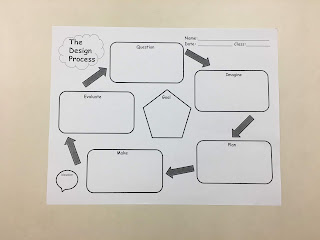Our First Attempt - Doing Science
The idea for this unit came from @taralynnakamoto
One lesson from this past year was used to teach the students about things like mass, energy, motion, gravity, friction, etc. We also wanted them to learn and use design techniques (for example, the design process, and how to attach object together) and engineering concepts like weight distribution, strength, stability, structural integrity, etc.
First we used a thinking routine from Harvard University Graduate school of Education's Project Zero group, Agency by Design. This particular activity asked student to look at an object and record its parts, purposes and complexities. By dong this, the students had to really think about the object, how it was made, why the designer/inventor might have done things a certain way. The parts and their purposes was pretty straight forward, but complexities gave them a little trouble. However, when one student shared their thoughts, it made sense to the rest. For example, one of the ways the pencil is complex was the way the eraser attached to the pencil. There are ridges in the metal band that help hold these two objects together. They also noticed the holes punched in the side of the band that caused the metal to bend into the wood and the eraser.
Next, we introduced the design process. There are a variety of them, including Stanford's dSchool Design Thinking and the Science Museum-Boston's EiE Engineering Design Process. The basic idea is to that you start with a need/goal; you ask questions about it and it's purpose; you brainstorm ideas to solve the problem; you create a plan; make the object/system; test it; evaluate it; if it works, ask yourself, "How can it be improved" or if it doesn't work, "Why and how can I fix it"; and then you start the process all over.
We then had a mini-lesson about how to attach things. Techniques link using flanges, tabs, slots and braces were all introduced and then the students were sent off with materials to practice.
After that, the students were given a design challenge...create something that will hold 150grams, be 8cm off the ground and swing 12cm from side to side. Students were given a design sheet and as a class, asked questions about their final goal...some were answered, some were not. One of the questions had to do with building materials: Each group would be given 15 straws, 2' of string, 2' of masking tape, a paper cup and a piece of cardboard (for the base), and 150grams of pennies. Their tools consisted of a pair of scissors, and a hole punch.
It was then on to brainstorming ideas by themselves, and coming up with at least 2 different ideas. Next they got together with their partner, shared their ideas and came up with one that they both agreed upon. They had to draw a labeled design blueprint and have it approved, before they could begin to create.
One of the great thing about this type of teaching is the cooperative groups and the teamwork that happens. Students not only have to deal with the good times when everyone agrees but when different ideas are presented, they have to work to com to consensus.
During the making stage, students followed their plan without change. Once the swing was done, it was tested to see if it followed the criteria and reached the goal. When they didn't, it was back to the "drawing board" to try again.
First Attempt
Final Attempt
As this was the first tryu at this type of science for these students, so they were told to remember that "FAIL" isn't a bad word...rather it stands for "First Attempt In Learning".











Comments
Post a Comment